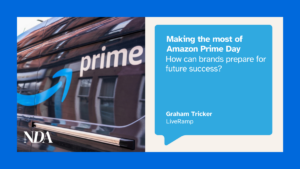By Anoop Ramachandran, CTO, Preciso
Shopify offers many benefits for small and medium-sized enterprises looking to build successful ad campaigns, thanks to its global reach and comprehensive range of integrations and APIs. Currently, it ranks fourth across the globe, holding approximately 10% of the ecommerce market, just behind Squarespace, Woo Themes, and WooCommerce.
Between March 2020 and January 2022, the number of active Shopify stores skyrocketed by over 200%, and today, the number stands at an impressive 6.25 million online stores.
But what makes Shopify a popular platform for ecommerce businesses, and how can they leverage Shopify audience data to enhance their marketing campaigns?
Understanding Shopify audience data
Due to the sheer size of the platform, Shopify audience data provides far more granular insight into the behaviour and preferences of customers than brands would otherwise have access to. It can help create hyper-targeted marketing campaigns that are much more likely to resonate with the right audience at the right time.
Shopify’s audience data includes:
- Detailed customer demographics, including information such as age, gender, location and language.
- Purchase history, including which items customers have purchased in the past, how often they make purchases, and how much they spend.
- Behavioural data, including information about how customers interact with a brand’s website, such as how long they spend on each page, which types of content they engage with, and what products they view.
The wealth of Shopify data
One of the biggest advantages of using Shopify is the vast – and indeed ever-growing – volume of data brands can collect on their customers in order to refine and target their ad campaigns as their store grows.
With Google phasing out third-party cookies by the end of 2024, leveraging first-party data has become more important than ever. Shopify provides a viable data platform that enables brands to scale – all without relying on cookies.
One-stop shop for integrations
Leveraging Shopify data through app integrations is a powerful way to optimise ecommerce operations and improve business performance, giving brands access to a wealth of additional data and functionality that will inform marketing campaigns and decision-making.
Shopify integrations are third-party tools that enhance the functionality of a Shopify store by helping to automate various tasks, streamline business operations, and improve efficiency. There are currently over 7,000 integrations that businesses can use to integrate various services, from marketing and sales to accounting and shipping solutions to Preciso’s own app integration.
Mailchimp, Oberlo, QuickBooks, and ShipStation are some of the most prominent integrations offered by Shopify today. There are also tools to help brands of all sizes target the right audience through smart bidding technology, intelligent audience ranking and machine learning, including Preciso’s own platform, which offers plug-and-play targeted display ad campaigns, specifically for SMEs.
How brands can utilise Shopify audience data
1. Improved targeting: Brands can better understand their customer’s behaviour, preferences and purchase history by analysing their Shopify data, which will inform future targeting campaigns, allowing them to reach the right customers at the right time.
2. Increased ROI: Another benefit of leveraging Shopify data for ad campaigns is increased ROI. Through advanced analysis, brands can identify which products are performing well and which are not, to adjust ad campaigns and allocate budget more effectively. For example, if a particular product is not selling well, a brand can reduce ad spend in this area and allocate it to a more profitable product to maximise ROAS (Return on Ad Spend).
3. Better scheduling: Identifying trends and patterns in customer behaviour can also help brands optimise their ad campaigns in terms of scheduling. For example, if a product isn’t selling well during a specific time, campaigns can be rescheduled to reach customers just when they are primed to buy.
4. Customised messaging: With access to granular customer data such as demographics, purchase history and preferences, brands can tailor their creatives to speak directly to subsegments of their audience. For instance, if a significant proportion of customers are young adults who buy surfing gear in the summer months, a surf brand could run a dedicated campaign using a particular ad creative that is more likely to resonate with this specific demographic for the duration of the campaign.
5. Better Inventory management: Finally, Shopify audience data can also improve inventory management. By analysing customer purchase history, brands can determine which products are most popular and adjust their inventory accordingly. This helps to ensure they always have the products their customers want in stock, leading to increased sales and customer loyalty.
Shopify provides a great experience for brands looking to build marketing campaigns to reach new and more targeted audiences. With its sheer wealth of audience insights – coupled with a comprehensive range of integrations and APIs – brands of all sizes can easily customise and scale their ecommerce operations for long-term success.









